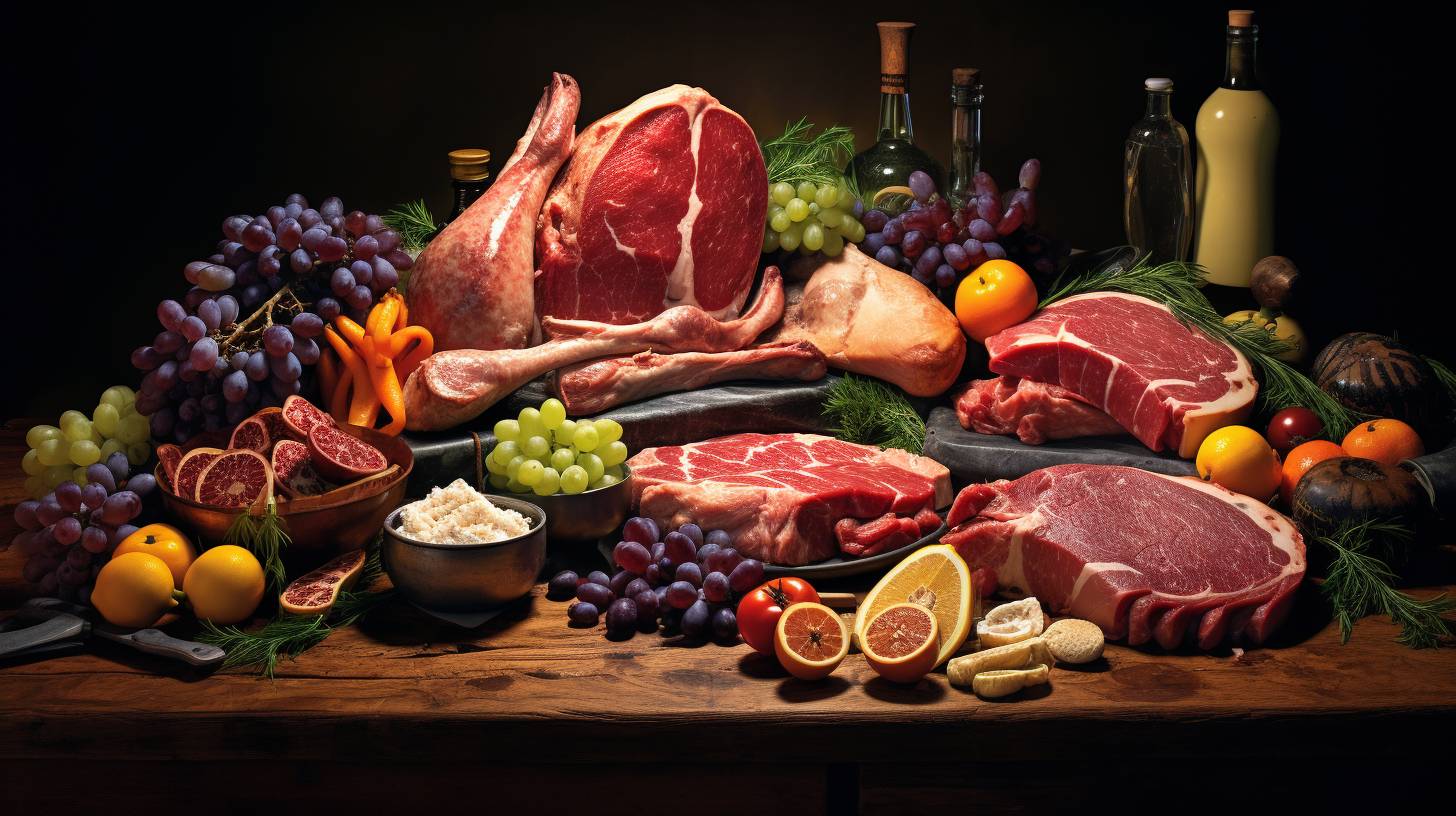The Macro Mastery: The Faster Way to Fat Loss Macro Cheat Sheet

Please read our helpful article and then scroll down for your free faster way to fat lost macro cheat sheet in PDF format! |
Introduction to the Faster Way to Fat Loss Macro Cheat Sheet
Are you tired of counting calories and feeling like you need a PhD in nutrition just to shed a few pounds? Well, buckle up, because we've got a game-changing solution that will have you saying goodbye to those pesky love handles in no time. Introducing the faster way to fat loss macro cheat sheet! In this article, we'll reveal the secret shortcut to reaching your weight loss goals while still enjoying the foods you love. Say goodbye to deprivation and hello to a healthier, happier you. Ready to uncover the magic? Keep reading!
Picture this: you're on a quest to shed those stubborn pounds and reveal a more toned, healthier version of yourself. You've tried countless diets and exercise routines, but nothing seems to give you the results you desire. Frustration sets in, and you begin questioning whether your dream body is just that—a dream.
But fear not! There's a secret weapon in the world of nutrition that can accelerate your fat loss journey: the macro cheat sheet.
So, what exactly is this magical tool? A macro cheat sheet is essentially a personalized guide that outlines your daily macronutrient intake based on your goals—specifically, faster fat loss.
It helps you track and monitor your consumption of carbohydrates, proteins, and fats to ensure they align with your weight loss objectives. With this cheat sheet in hand, you'll have an effective roadmap towards achieving your desired physique.
The Power of Macros: Unlocking Your Body's Potential
Now that we understand what a macro cheat sheet is all about, let's delve into why macros are so crucial when it comes to fat loss. Macros—short for macronutrients—are the three major components found in our food: carbohydrates (carbs), proteins, and fats.
Each macro plays a vital role in our body's functioning. Carbohydrates serve as the primary source of energy for our bodies.
They fuel our brain activity, muscle contractions during workouts, and everyday activities like walking or even thinking deeply about which Netflix series to binge-watch next (we've all been there!). Proteins are essential for repairing tissues damaged during exercise and promoting muscle growth—a key factor in increasing metabolism and burning more calories even at rest.
Fats may seem intimidating due to their reputation as calorie-dense nutrients; however, they are essential for hormone production, vitamin absorption, and maintaining healthy cell function. Unsaturated fats found in foods like avocados and nuts have been linked to improved heart health and reduced inflammation.
Understanding Macros
The Macro Marvels: Carbs, Proteins, and Fats
When it comes to understanding macros, think of them as the superheroes of nutrition. Our three main macronutrients – carbohydrates, proteins, and fats – play vital roles in fueling our bodies. Let's take a closer look at each of these champions.
Carbohydrates: The Energy Powerhouse
Carbs often get a bad rap in the world of dieting, but they are crucial for our bodies to function optimally. These energy-packed nutrients are like rocket fuel for our cells. When consumed, carbs are broken down into glucose, which provides the energy needed to power through your day like a superhero on a mission.
Think of your body as a mighty fortress. Carbohydrates act as the primary defenders against fatigue and exhaustion.
They're found in foods such as whole grains, fruits, and vegetables. So don't be shy about including them in your macro cheat sheet – they're key players when it comes to achieving faster fat loss.
Proteins: Muscles' Best Friends Forever
Proteins are the sidekicks that help us build strong muscles and repair damaged tissues like no other macronutrient can. These muscle-building powerhouses make you feel like you can take on any challenge that comes your way.
Just imagine proteins as construction workers inside your body. After you crush it at the gym or engage in any physical activity that leaves you feeling gloriously exhausted (in a good way), these hardworking nutrients swoop in to repair those microscopic tears in your muscle fibers.
That's how those biceps get stronger! Include protein-rich foods like chicken breast, fish, tofu, or even legumes on your macro cheat sheet if you want to unleash your inner superhero physique.
Fats: The Unsung Heroes
Ah, fats – the underappreciated heroes of the macronutrient world. Don't let their name fool you; these stealthy nutrients are essential for optimal health.
Fats keep our hormones in check, aid in nutrient absorption, and act as a protective shield for our organs. Think of fats as secret agents working behind the scenes to ensure your body functions like a well-oiled machine.
Avocado, nuts and seeds, olive oil – these are just a few examples of healthy fat sources that deserve a place on your macro cheat sheet. Remember, macros are like an elite team of superheroes working together to keep you in tip-top shape.
Understanding their roles will help you create the ultimate macro cheat sheet that can unlock faster fat loss results. Stay tuned for the next section on calculating your personalized macro requirements to embark on your own superhero transformation!
Determining Daily Calorie Intake Based on Goals (Fat Loss)
Subtitle: "Fueling Your Fat Loss Journey" When embarking on a fat loss journey, one of the key factors to consider is your daily calorie intake.
Understanding how many calories your body needs can help you create a sustainable and effective plan. To determine your daily calorie intake for fat loss, you need to calculate your Total Daily Energy Expenditure (TDEE).
This includes the number of calories you burn through physical activity and basic bodily functions. A simple way to estimate your TDEE is by multiplying your body weight in pounds by a factor between 10-14, depending on your activity level.
For example, if you weigh 150 pounds and have a sedentary lifestyle, you would multiply 150 by 10 to get 1500 calories as an estimate of your TDEE. However, keep in mind that this is just an estimate and individual variations exist.
While creating a caloric deficit is essential for fat loss, it's crucial to strike the right balance. Drastically cutting calories may lead to muscle loss and slowed metabolism in the long run.
A moderate deficit of around 500-750 calories per day is generally recommended for sustainable fat loss. This gradual approach allows your body to adjust while still providing sufficient energy for daily activities.
Setting Macronutrient Ratios
Subtitle: "The Perfect Macro Symphony" Now that you have determined your daily calorie intake, it's time to allocate those calories into macronutrient ratios.
The commonly used ratio for fat loss macros is often referred to as the "40/30/30" approach - with 40% carbohydrates, 30% protein, and 30% fats. This ratio provides enough carbohydrates for energy while ensuring adequate protein intake for muscle preservation and fats for various bodily functions.
Carbohydrates are the body's preferred source of energy, making up the largest portion of your macronutrient intake. They should come from whole food sources like fruits, vegetables, whole grains, and legumes.
Protein plays a crucial role in muscle repair and growth while also aiding in satiety. Include lean sources such as chicken breast, tofu, eggs, and Greek yogurt.
Fats are often misunderstood but are essential for hormone production and nutrient absorption. Incorporate healthy fats from sources like avocados, nuts/seeds, olive oil, and fatty fish.
Adjusting Ratios Based on Individual Needs and Preferences
Subtitle: "Finding Your Unique Macro Symphony" While the 40/30/30 ratio is a good starting point for fat loss macros, it's important to remember that everyone's nutritional needs are different. Personal preferences, dietary restrictions or allergies may require adjustments to the macronutrient ratios.
For example, if you have a higher carbohydrate tolerance or engage in intense physical activity regularly (such as endurance training), you may opt for a slightly higher carbohydrate percentage. Additionally, experimenting with different macro ratios can help determine what works best for you.
Some individuals find success with lower-carb approaches such as ketogenic diets or high-protein diets that prioritize muscle retention. The key is to find a balance that supports your lifestyle while promoting fat loss.
Tracking your progress using macro cheat sheets can be immensely helpful during this stage. Tools like calorie tracking apps or online calculators can help you monitor your daily intake of carbohydrates, protein, and fats to ensure you're staying within your desired range.
Remember that finding the optimal macro cheat sheet takes time and self-experimentation; what works for one person may not work for another! As you fine-tune your macros based on personal needs and preferences along with monitoring results closely with macro cheat sheets - watch how this method propels you towards faster fat loss and helps you achieve your health goals.
Identifying Favorite Food Choices within Each Macronutrient Category
Imagine being able to reach your fat loss goals while still enjoying your favorite foods. With the macro cheat sheet, this becomes a reality.
The first step in creating your personalized cheat sheet is identifying your preferred food choices within each macronutrient category: carbohydrates, proteins, and fats. Carbohydrates are often associated with comfort food and provide the body with energy.
Some popular carbohydrate choices include pasta, rice, fruits, and potatoes. When selecting your favorite carbohydrate sources for the cheat sheet, focus on those that you genuinely enjoy and can integrate into your daily diet without feeling deprived.
Proteins play a crucial role in muscle repair and growth. Common protein options include chicken breast, tofu, eggs, lean meats like turkey or fish, and legumes like lentils or beans.
Choose protein sources that not only support your fat loss goals but also appeal to you both in terms of taste and texture. Fats are essential for hormone production and nutrient absorption.
Opt for healthy fat choices like avocado, nuts/seeds (such as almonds or chia seeds), olive oil, coconut oil, or fatty fish like salmon. These options will not only add flavor to your meals but also provide necessary nutrients for overall well-being.
Determining Portion Sizes for Each Food Choice
Once you have identified your preferred food choices within each macronutrient category, it's time to determine appropriate portion sizes for accurate macro tracking. While eyeballing portions can be challenging at first, it becomes easier with practice. For carbohydrates: Measure half a cup of cooked rice or pasta to get an estimate of how many grams of carbs it contains.
Different types of fruits may have varying carb amounts per serving (e.g., an apple contains around 25 grams of carbs). So, familiarize yourself with the specific carb content of your favorite fruits.
For proteins: A typical serving of chicken breast is around 3 ounces, which provides about 25 grams of protein. Tofu usually contains about 10 grams of protein per half-cup serving.
Eggs are a versatile protein source, with each egg containing approximately 6 grams of protein. For fats: One tablespoon of olive oil has roughly 14 grams of fat.
Avocado is rich in healthy fats, with half an avocado containing approximately 10 grams of fat. Nuts and seeds have varying fat content, so check their labels for accurate measurements.
Utilizing the Macro Cheat Sheet for Faster Fat Loss Results
Optimizing Meal Planning with Your Macro Cheat Sheet
When it comes to achieving faster fat loss results, meal planning is paramount. Armed with your personalized macro cheat sheet, you can now effortlessly create meals that align with your goals.
Start by selecting a variety of food choices from each macronutrient category on your cheat sheet. For instance, if you need carbs, opt for whole grains like quinoa or sweet potatoes.
If protein is essential, consider lean options such as chicken breast or tofu. To meet your fat requirements, go for healthy sources such as avocados or nuts.
Once you have chosen your ingredients from the cheat sheet, it's time to get creative in the kitchen! Experiment with different recipes and combinations to keep things interesting and enjoyable.
For example, you could try making a colorful stir-fry using lean protein and an assortment of veggies rich in fiber and vitamins. Remember to pay attention to portion sizes indicated on your cheat sheet while preparing meals.
This will ensure that you stay within the recommended range of macros for optimal fat loss results. By following this methodical approach and utilizing the macro cheat sheet as a guide, meal planning becomes not only efficient but also effective in aiding faster fat loss.
Maintaining Consistency and Tracking Progress
Consistency is key when it comes to achieving any goal, especially fat loss. Your macro cheat sheet serves as a reliable tool that helps maintain consistency in your dietary choices.
Stick to the foods listed on the cheat sheet while considering any adjustments necessary based on personal preferences or changes in nutritional needs. To track progress effectively, consider keeping a food diary or using a nutrition app that allows you to log your daily intake accurately.
The macro cheat sheet can also serve as a reference point when tracking macros consumed throughout each day. Keep in mind that the macro cheat sheet is a flexible guide, allowing room for occasional indulgences without derailing your progress.
Remember, it's important to maintain a healthy balance and not obsess over every single meal. By incorporating the macro cheat method into your fat loss journey, you can achieve sustainable results while enjoying the occasional treat.
Conclusion
Incorporating a macro cheat sheet into your fat loss journey can be an effective way to optimize meal planning and achieve faster results. By understanding macronutrients and their roles in the body, you can create a cheat sheet tailored specifically to your needs and preferences.
This personalized tool allows you to effortlessly plan meals that align with your goals while maintaining consistency. Utilizing the macro cheat sheet empowers you to make informed choices about portion sizes, food combinations, and overall calorie intake.
With proper tracking of progress and maintaining consistency in dietary choices, this method can lead to sustainable fat loss results. Remember to strike a balance between following the macro method and allowing yourself occasional indulgences.
Embracing the macro cheat sheet not only provides structure but also offers flexibility in achieving your fat loss goals. So grab your pen and paper or open that spreadsheet because it's time to create your very own macro cheat sheet—a powerful tool on your path towards a healthier lifestyle!
Click here to download your FREE Faster Way to Fat Loss Macro Cheat Sheet!  |


